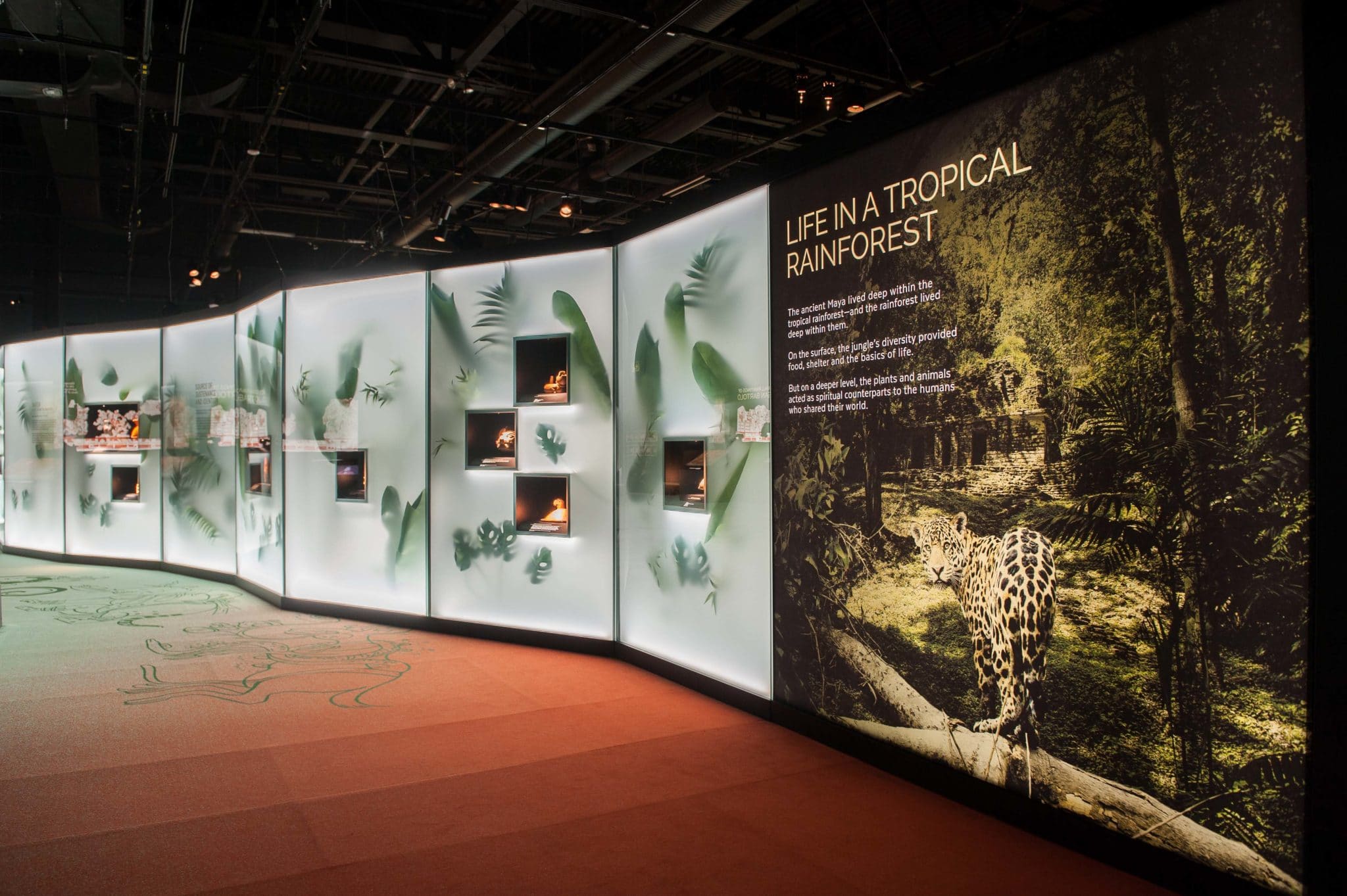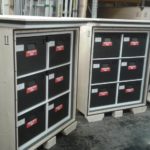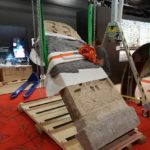What if two months before an exhibition was due to open, the object loan agreement was rejected? What if the plane transporting the exhibition’s treasure objects ended up in an emergency situation? What do you consider as a worst-case scenario when producing a travelling exhibition? Perhaps we can provide you with some inspiration.
There are some projects that run like clockwork. You follow a certain process, develop a concept, plan, implement. Everything works out well. Projects like these undoubtedly happen. Very often, however, this is not the reality. Just as life is filled with unexpected twists and turns, projects are also influenced by unpredictable external factors. These factors should not be treated as only negative disruptive elements. Sometimes supposedly unpleasant surprises turn out to be positive. It all depends on how you respond to these unexpected influencers.
How to deal with unpleasant surprises? The success of an exhibition’s development correlates with wide knowledge of the market, a reliable network, the necessary capacities, diplomacy, technical skills, and a bit of luck certainly might help as well. Also, to a large extent, success strongly depends on the skills of the project manager. Project managers handle the project “unknowns”. Whether these unknowns turn out to be something good or bad greatly depends on the abilities of the project manager. With this in mind, agility is an important success factor. In fact, agility is, in our view, the be-all and end-all in project management. Various definitions of Agile Project Management exist in literature.
In this article, when speaking of agility in project management we basically mean the ability to respond to changes quickly without allowing an event to significantly impact the process. One could argue that proactive management is the central point in Agile Project Management. However, in our view, proactive and reactive approaches should be combined in an effort to predict the future with an appropriate level of certainty. In other words, possessing the skills to respond to surprises after they have occurred is as important as the ability to foresee potential unknowns and weather the storm before it hits. An agile project manager fully integrates change as part of his or her project development, is always ready for surprises, and is able to handle difficult situations without interrupting internal and partner procedures. He or she is able to manage any unknowns in such a way that best meets everyone´s expectations. Sound like a difficult job to you? In this article, we want to share an example of a project filled with unpredictable surprises that turns out to be very pleasant in the end.
Let us tell you the story of the adventurous exhibition development we experienced for our major travelling exhibition about the famous Maya.
Probably one of the most exciting aspects of developing travelling exhibitions are the trips to all the different places around the world, the possibility to learn about other cultures and to make new friends.

It all began at the end of 2017. The Royal BC Museum contacted MuseumsPartner, our organisation, about a possible collaboration. They were interested in developing and displaying an exhibition about the Maya. We engaged in a project the purpose of which was to provide its audiences with a unique discovery of the Maya culture; a culture that is very much misunderstood nowadays and holds a lot of secrets that need to be revealed. The project fitted both visions: that of the Royal BC Museum and that of MuseumsPartner. Everything ran smoothly. The project kicked off in Alicante, Spain, in January 2018. All parties involved – Royal BC Museum, exhibition designer Angel Rocamora, the National Museum of Archaeology and Ethnology in Guatemala, La Ruta Maya Foundation, the curators and MuseumsPartner – participated in a workshop to set the framework for the travelling exhibition and to develop the basic idea and concept. This workshop enabled us to identify possible problems and determine solutions a priori. A supposedly very pleasant and interesting journey began.
Probably one of the most exciting aspects of developing travelling exhibitions are the trips to all the different places around the world, the possibility to learn about other cultures and to make new friends. The central point of the exhibition planning for the Maya exhibition was Guatemala, and our first trip there took place in April 2018. We travelled together throughout the whole country with the Maya expert and curator of the exhibition, Nikolai Grube, to visit all of the relevant museums and to meet the Minister of Culture as well as many museum and Maya community representatives. All relevant objects were identified. So far so good. Anyone who has experienced developing a travelling exhibition knows the complexities involved in securing treasure objects to be toured around the globe for several years. In this instance, we had a very good understanding of the potential concerns and were prepared to resolve any doubts raised by the government and Ministry of Culture. We were aware that negotiations are sometimes the biggest obstacles and that the development of travelling exhibitions very often fail at this point. But still, no one could have imagined how this project would turn out.
Anyone who has experienced developing a travelling exhibition knows the complexities involved in securing treasure objects to be toured around the globe for several years.
Throughout 2018, several workshops were arranged in Guatemala, Europe and British Columbia. The concept was defined in more detail, and decisions regarding multimedia, vendors, etc., were made. At the same time, we drew up the contract for the loan of the objects. The exciting part started: the object loan negotiations kicked off. At this point, we faced two major peculiarities: firstly, during the negotiations some significant political office holders changed twice. This is not uncommon, but it can delay the production development and threaten the completion of the exhibition. Secondly, the governmental structure in Guatemala is composed in such a way that museums directors are not allowed to decide on the export of objects without the approval of the Ministry of Culture in Guatemala. This makes it even more complex to agree on object loans.
It was the beginning of December 2018 and we had still not received confirmation of the object loan. The exhibition opening was scheduled for 15 May 2019, and we had to start the production of the exhibition’s architecture to ship it in time to Victoria, BC, Canada. The shipment was scheduled for February 2019 to enable us to deliver and install the exhibition in time for the opening.
In March 2019, the Ministry of Culture informed our team that only 60 % of the selected objects were available. The remaining 40 % lacked, to their regret, full provenance certificates and the government decided it would not exhibit any of those objects abroad. Three days after this announcement, the team from MuseumsPartner, the architect of the exhibition, the curator and the Head of Knowledge from the Royal BC Museum took a flight to Guatemala to find a solution together with the authorities. The Ministry of Culture was aware of all the work that had already been put into the project and of its importance for all the involved stakeholders. Therefore, they generously suggested to replace those pieces with various other astonishing objects. Some of the new pieces had only recently been discovered in the jungle of Guatemala and had never been seen by the public before. The Ministry of Culture included objects such as the stela of Lady Six Sky, a stela weighing 1,500 kg still anchored in a concrete base at the Guatemalan National Museum of Archaeology and Ethnology (MUNAE), showing the most important Maya queen. Female portraits of this type are exceedingly rare in Maya art. Other objects included the world-famous altar number 5 from La Corona, which is the oldest Maya sculpture from La Corona ever discovered and has never been shown outside of Guatemala before. These sensational objects motivated the whole team to work hard on the adaptation of the exhibition to give these exceptional pieces the narrative importance that they deserved. We adapted the architecture, texts and graphics, and sent highly skilled art technicians to Guatemala to pack and crate the exhibits. Simultaneously, we produced meticulously designed and engineered climate crates at MuseumsPartner’s crate shop in Austria. Thanks to our cooperation with the Ministry of Culture, the National Museum of Archaeology and Ethnology in Guatemala, the team at the Royal BC Museum and their highly experienced staff, we were able to finish the packing and transported the objects to Canada at the end of April 2019. However, there was no time to relax as the hurdles were not over. The adventurous journey continued…
How project managers of travelling exhibitions handle unknowns [...] truly understanding what's at stake for all parties is crucial to the success of the project.

The objects, weighing 15 tonnes, were loaded, under supervision, into the cargo plane. It seemed as though everything was working out well. When the plane was above the clouds over Mexico, however, one of the plane’s engines broke down. In an emergency case, the plane had to turn around. A replacement aircraft was organised and all tensions were gone again. In Victoria, BC, Canada, the team from MuseumsPartner welcomed the objects to start the installation under a tight schedule. Thanks to the extremely engaged team of the Royal BC Museum, the very well-equipped carpentry in the museum and the harmonious collaboration between the museum, the conservators from Guatemala and the MuseumsPartner team, everything ran smoothly.
The exhibition opened in time and the Royal BC Museum secured a financial return for their investment. Within seven months, 340.000 visitors came to see the Maya exhibition. The exhibition was very well received by the public and the media alike. The exhibition is currently on display at the Cincinnati Museum Center in Ohio, USA. The next stops will be the Musée de la Civilisation in Quebec and the Royal Alberta Museum in Edmonton.
Developing a travelling exhibition can be quite an adventure. It is essential to be open to unexpected twists and turns in the journey, and to actually embrace change as a potential source for new ideas, whilst creating and maintaining a strong dialogue with all stakeholders, and being open to new perspectives. The following quote by Napoleon Hill summarises the point quite well: “Plan your work and work your plan.” Even the best plan can be useless if one is not ready for surprises, as they will occur anyway. How project managers of travelling exhibitions respond to these surprises and handle unknowns in a way that ensures they do not affect project partners – at least not in a disadvantaged way, truly understanding what’s at stake for all parties – is crucial to the success of the project.
Description of the exhibition
Maya, the travelling exhibition, presents 300 original objects telling the stories of kinglike rulers and everyday life. It is the world’s largest and most impressive display of Maya objects from Guatemala, starring objects previously inaccessible to the public and just recently unmasked. The exhibition, with its rewarded modular, immersive exhibition design, includes several hands-on elements, videos and multimedia elements. For more information, visit the exhibition details on Teo.
This exhibition is supported by the Ministry of Culture and Sport, Patrimonio Cultural y Natural Guatemala. The exhibition was curated by Prof.Dr.Dr.h.c. Nikolai Grube from the University of Bonn. The artifacts are drawn from the National Museum of Archaeology and Ethnology (MUNAE) and the La Ruta Maya Foundation.
About the authors & contributors
Jessica Elsaesser, Digital Media Management, MuseumsPartner. Jessica has been part of the MuseumsPartner team since 2013. She started working for MuseumsPartner whilst finishing her studies in Strategic Management and Economics.
Content, project coordinator: Siegfried Brugger, CEO of travelling exhibitions at MuseumsPartner. Siegfried has more than 25 years´ experience and founded MuseumsPartner together with Peter Elsaesser and Kathrin Sandrini in 2004. MuseumsPartner is a leading art logistic provider and producer of object and scientific-based travelling exhibitions.








